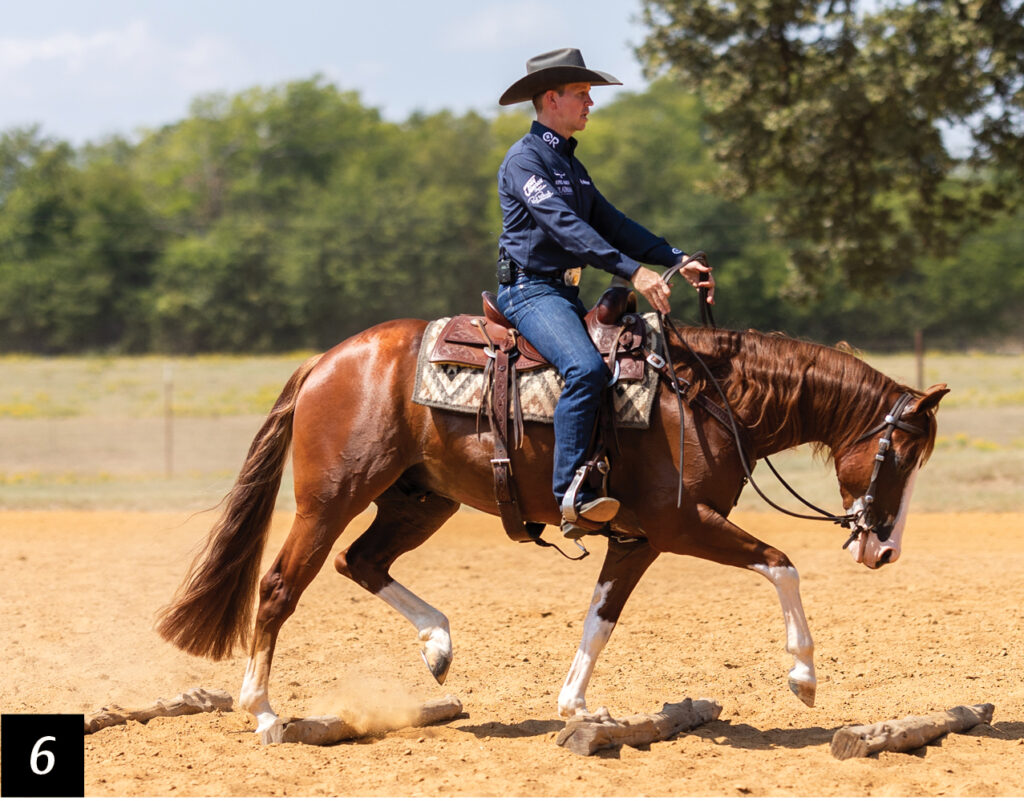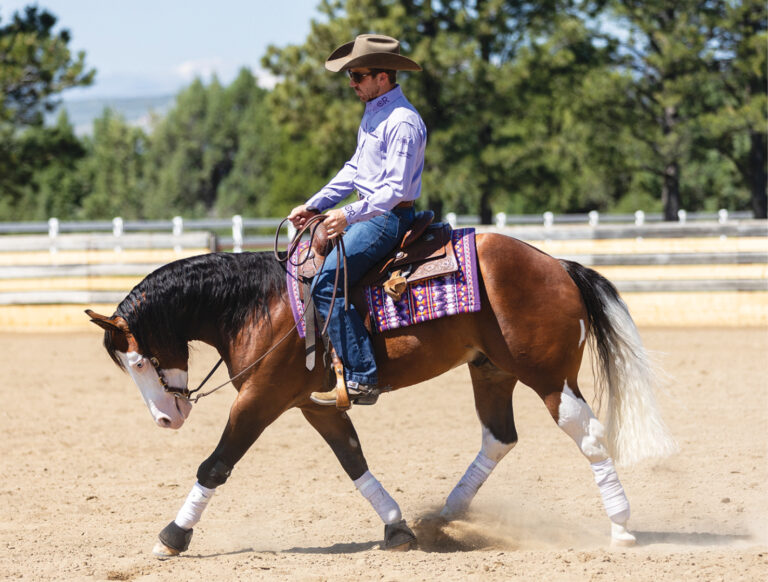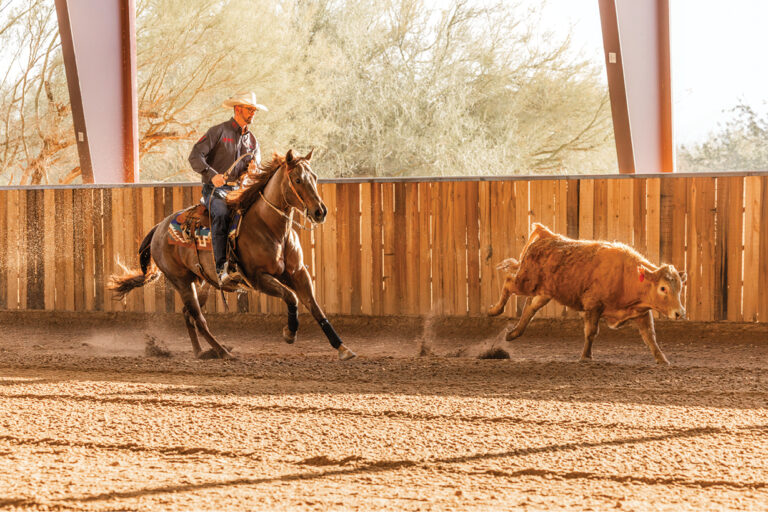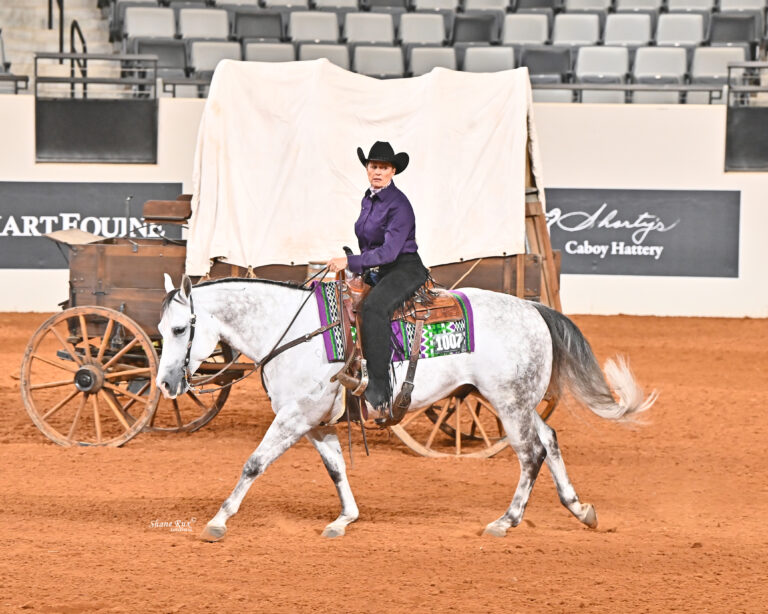Ranch riding patterns usually include some kind of log obstacle. It could be a sidepass, or you could be asked to walk, trot, or lope over the logs. Today I’m going to talk specifically about trot-over logs and how you can practice at home to build your horse’s confidence going over them.

It’s easy to overlook practicing going over logs at home, especially if you find yourself without any poles to practice on. But the nice part about ranch riding is that perfectly shaped poles aren’t a necessity. In fact, most of the time when you go to a horse show, you’ll see natural logs in their place. This means you can utilize any kind of downed log that might be around the property. Just make sure that they’re small enough that your horse can safely get over them.
While we occasionally are asked to jump a log in ranch riding, you want to make sure these logs are easy enough for your horse to carefully sidepass, walk, trot, and lope over.
When I’m first teaching a horse to go over logs, I might start with just one or two logs until my horse gains the confidence he needs to go through a series of trot-overs. While the horse that I’m riding in these photos is young, he has been going over logs for almost a year, so I’m going to up the degree of difficulty by asking him to go over four logs in a row.
One
I always make sure to give my horse plenty of space to get straight before I ask him to go over a series of logs. If my horse is green, I’m only setting him up for failure if I approach the logs at a tight angle or don’t give him enough time to get a steady rhythm going in his feet. I’m going to count one, two, one, two in my head to help us both stay in a good forward-moving trot, and I look where I want to go—avoiding looking down at the logs.
If my eyes drift down to the logs, my horse is going to have a better chance of hitting the log. It’s also going to cause me to sit unbalanced in the saddle, as I’m looking forward and down and into the dirt.

Two
My horse starts to rush as he gets closer to the logs. Instead of letting him go over them when he’s rushed, rather than rating the logs that are in front of him, I stop and back him up a few steps. He needs to learn to have a little self-control and pay attention to what’s in front of him. If I find he’s rushing through the logs, I will even stop him midway through the obstacle so he focuses more on me and speed control, and not just getting through the logs as quickly as he possibly can.
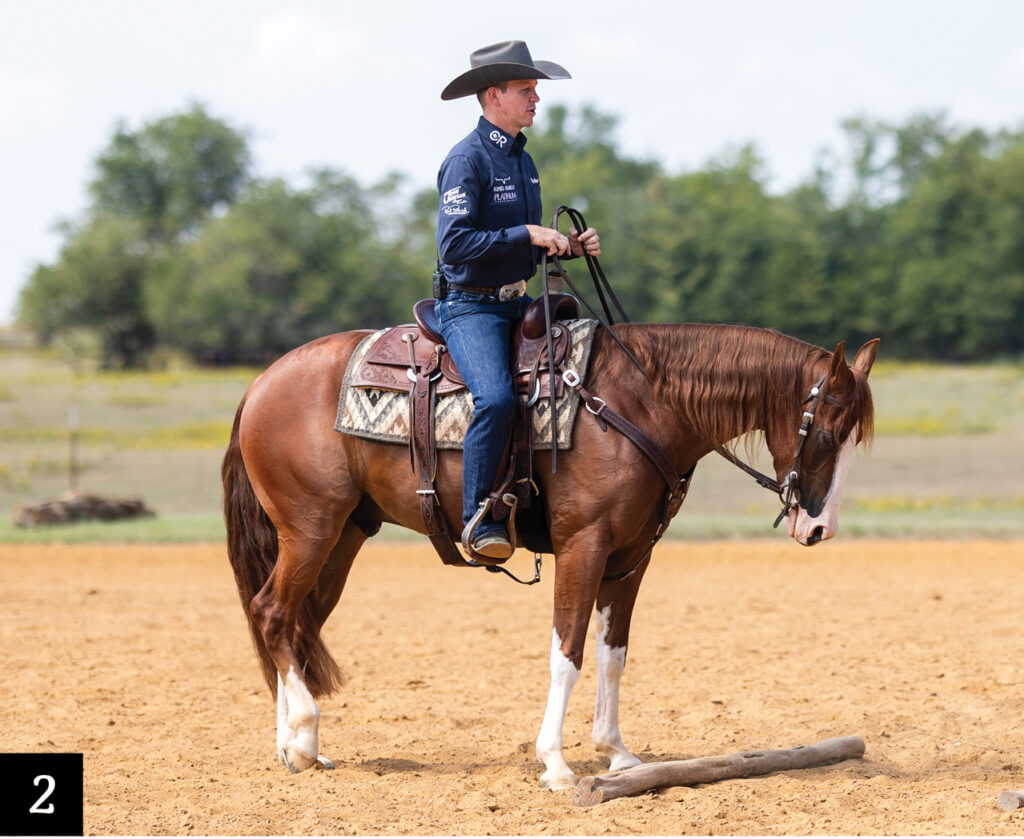
Three
I give myself plenty of time to straighten my horse and then ask him to go over the logs. As I go over them, I want my horse to travel straight—not leaning one way or another. I also want him to allow me to make small adjustments in speed and pace, rather than going on autopilot.
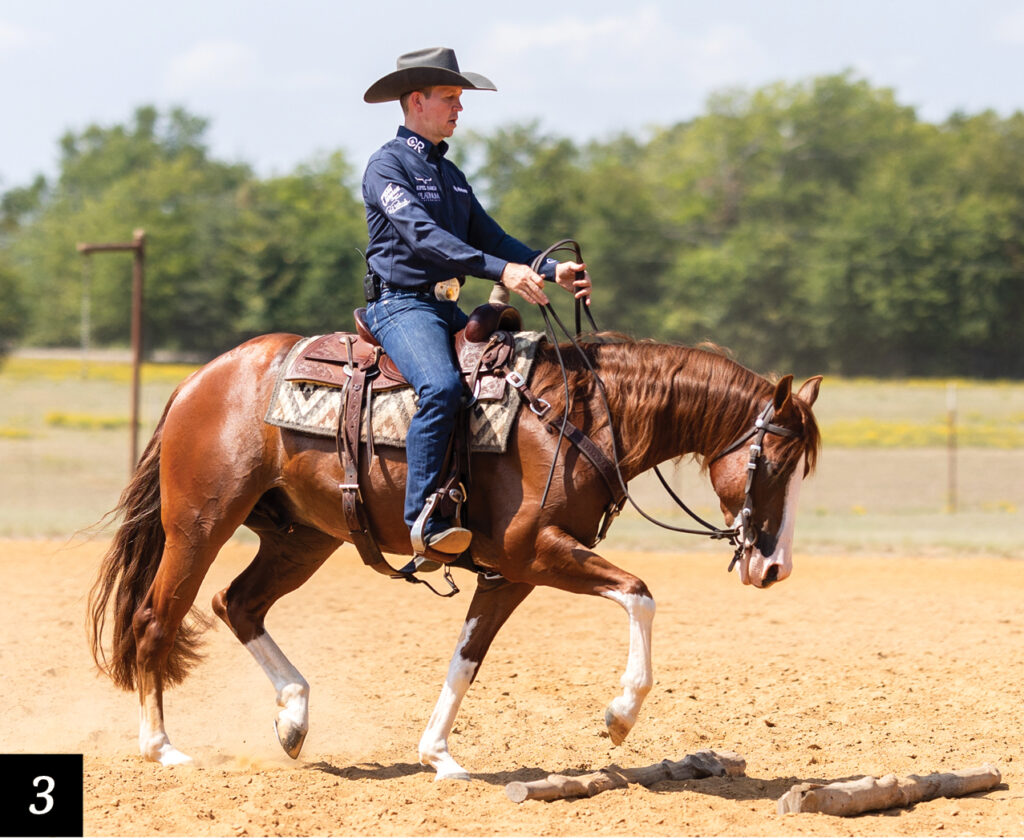
Four
I get through the logs, stay straight after I leave the obstacle to reinforce that straightness, and then perform a circle on the other side of the arena so I can approach the logs going the opposite direction. This time, I notice my horse elevates his head and doesn’t want to stay round and collected. Because he’s flat in his body, he’s also ticking all the logs because he’s not carefully placing his feet between each one.
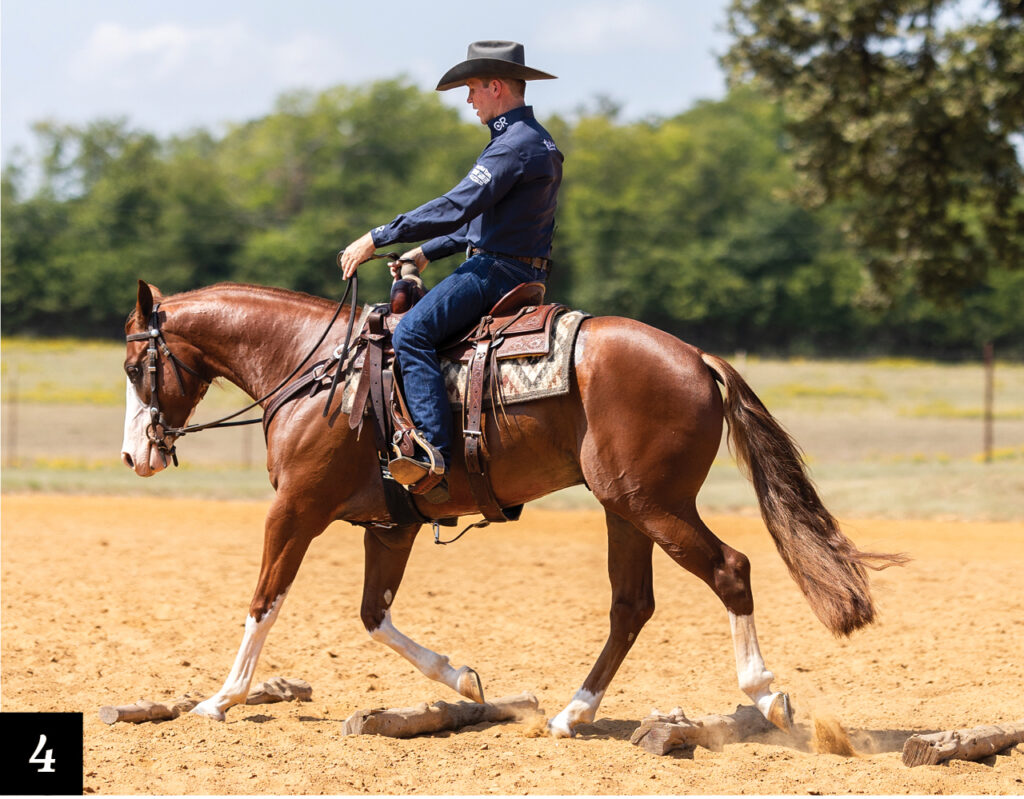
Five
I’m going to take my horse off the logs completely and focus on collection. I hold him with my hands, and use my legs to help him lift his belly up and get round. I will stay off the logs completely until I feel like he’s staying round and collected. When I go to my hand to rate his speed, he should be responsive in my cues.

Read About This Ranch Riding Super Horse
Six
I take him back over the logs, and this time he keeps his head down and stays collected through the obstacle. Because he’s collected, he’s picking up his feet and marching through the obstacle, avoiding hitting any of the logs as he goes through. He’s also staying straight between my hands and legs, and is letting me rate him through the obstacle.
